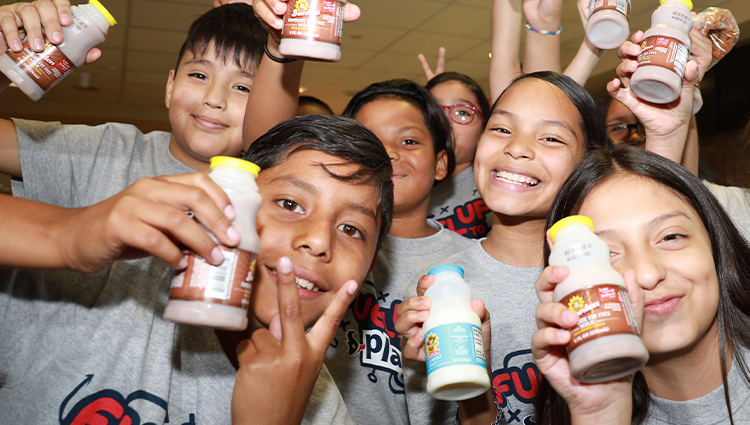School nutrition directors have long been concerned about food waste and finding ways to reduce it in their cafeterias. Tons of uneaten, even unopened, food items are discarded daily instead of nourishing growing students. Food waste not only negatively affects childhood nutrition, but also impacts schools’ budgets due to associated costs. Most school nutrition programs operate on limited budgets, and directors want to make certain they get the most student nutrition for every dollar spent.
Among many other strategies and innovative programs, increasing the palatability and accessibility of healthy foods can help improve student nutrition and reduce excessive waste in schools. That’s where 1% flavored milk comes in. Since many students prefer the taste of 1% flavored over fat-free flavored, they actually consume the entire carton of milk rather than tossing it into the trash can.
Keeping milk out of the trash is one of the main goals for Olga Rosenberger, director of food and nutrition services for Irving ISD in Texas.
“A healthy trash can does not benefit our students,” says Rosenberger. “It’s not nutrition unless the student consumes it. That is one of the reasons why we decided to move to 1% flavored milk.”
Solving the waste issue was also an important goal for Livingston Parish Public Schools in Louisiana. To better understand the problem, the district conducted a milk waste study* comparing data before and after adding 1% flavored milk to their menus. The study showed that 1% flavored milk both increased student consumption and decreased waste. In other words, fewer full or half-full milk cartons ended up in the trash can.
“We have seen an increase of at least 2% total milk consumption since switching to 1% flavored milk,” says Sommer Purvis, administrator of special programs for child nutrition in Livingston Parish Public Schools. “Educating and promoting the benefits of milk consumption to our students is an essential part of providing healthy, well-balanced menu options for school breakfast and lunch.”
Today, students are more environmentally conscious than ever before – concerned about building more sustainable food systems and reducing food waste. Involving them in the discussion about adding 1% flavored milk back to your district is a great way to show them you share that concern. They may have some great ideas to support your efforts to get more nutrient-rich foods into their diets – and less food waste into your trash cans.
If you would like help planning and executing food waste studies, contact your Dairy MAX School Wellness Consultant. Learn more about 1% flavored milk or how to add it to your processor bid here.




